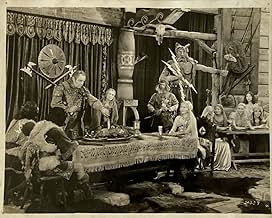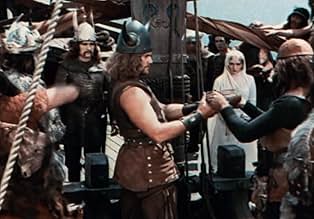Vikings compete for power and the love of a woman.Vikings compete for power and the love of a woman.Vikings compete for power and the love of a woman.
Anders Randolf
- Eric the Red
- (as Anders Randolph)
Harry Woods
- Egil
- (as Harry Lewis Woods)
Claire McDowell
- Lady Editha
- (as Claire MacDowell)
Iron Eyes Cody
- Indian
- (uncredited)
Frank Ellis
- Man Who Gives Sword to Alwin
- (uncredited)
Eugene McDonald
- Minor Role
- (uncredited)
Francis McDonald
- Viking Friend of Leif
- (uncredited)
Lon Poff
- Friar Slain by Vikings
- (uncredited)
Angelo Rossitto
- Viking Dwarf
- (uncredited)
Dick Sutherland
- Viking
- (uncredited)
- Director
- Writers
- All cast & crew
- Production, box office & more at IMDbPro
Storyline
Did you know
- TriviaWhen the film opened at the Embassy Theatre in New York City 28 November 1928, it was still silent and was accompanied by a live orchestral accompaniment. In December 1928 a musical score was recorded, sound-on-disc, and this version was distributed by MGM in 1929.
- GoofsViking women neither shaved their underarms nor wore the strapless bustiers.
- Quotes
Title Card: A thousand years ago, long before any white man set foot on the American shore, Viking sea rovers sailed out of the north and down the waterways of the world. These were men of might, who laughed in the teeth of the tempest, and leaped into battle with a song. Plundering - ravaging - they raided the coast of Europe - until the whole world trembled at the very name - THE VIKING.
- Crazy creditsThe title card bills the three stars in the order Pauline Starke [top billing], Donald Crisp [second billing], and Le Roy Mason [third billing]. But the opening credits end with "The Players" listed in the order: first "Leif Erickson ... Donald Crisp," second "Helga . . . Pauline Starke, third "Alwin . . . Le Roy Mason," etc. The characters appear on screen in the order Alwin, Helga, and Leif Erickson.
- ConnectionsFeatured in New England Legends: Creepy Christmas (2019)
Featured review
A handsomely staged silent epic created to showcase the new 2-strip Technicolor process. All the male leads fall for Viking maiden Helga (Pauline Starke, looking exceedingly fetching in her Viking outfits), but there's little doubt about which of them will claim her heart. Worth catching for the sight of a young Donald Crisp looking like a drummer in some early 1970s prog rock band.
- JoeytheBrit
- May 3, 2020
- Permalink
- How long is The Viking?Powered by Alexa
Details
Box office
- Budget
- $325,000 (estimated)
- Runtime1 hour 30 minutes
Contribute to this page
Suggest an edit or add missing content





































